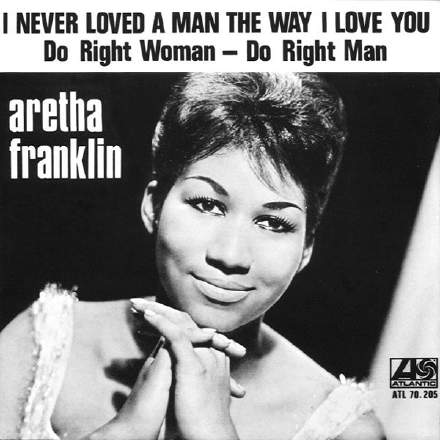
Like many pundits in the wake of The Queen Of Soul’s sad passing, I’ve recently been revisiting her incredible recorded legacy, and it’s this song that knocks my socks off more than any other. Despite it being her breakout hit, she already had nine Columbia albums under her belt, and that experience is abundantly apparent in the sheer range of her expression. Partly this is a simple question of pitch, with the melody effortlessly sweeping across two octaves up to top F — a note few chart singers hazard these days, least of all with such full-blooded wailing. But its also an issue of dynamics. It’s so tempting as a singer to find a level of performance intensity you feel comfortable with and pretty much stick to it. What’s so great about this performance is not only how it pushes to such extremes (the breathy purring of “the way that I” at 1:52 versus those top-of-the-lungs “yeah"s at 2:20), but also how starkly those are often juxtaposed, for instance during the first hook section at 0:47-1:00.
One difficulty with translating such dramatic vocal dynamics into recorded form, though, is that the singer also carries the lyrics, and those words won’t remain intelligible unless the level variations are significantly reduced during production. Here, however, the significant distortion on the louder vocal sections recreates an effective illusion of massive dynamic range despite this. So even though “baby you know” (1:28) doesn’t actually push out much more volume than “that you ever had” (1:32), the heavy distortion on the former makes it abundantly clear where Franklin’s really piling on the horsepower. Whether this was intentional I can only speculate, but it’s fair to say that the technical difficulties of capturing a vocal like this to tape without excessive noise or distortion were considerable, so it may simply have been unavoidable. (When tracks became more plentiful in the ’70s, some engineers would actually work around the problem by multing the vocal signal to two tracks with different recording levels.)
The vocal reverb’s also intriguing, because if you listen to the song’s a capella breaks, they boast a rich layer of reverb, but the “oh no no” that ends the preceding line is much drier, especially second time around at 1:50; we’re used to automating effects at mixdown these days, but it’s not often you hear such a clear example from over 50 years ago! What I can’t quite decide is whether we’re hearing a static reverb send on just the backing vocal overdub (which only appears for that section), or a reverb fed from both vocals being ridden up dynamically by hand. Every time I play it I draw a different conclusion…










